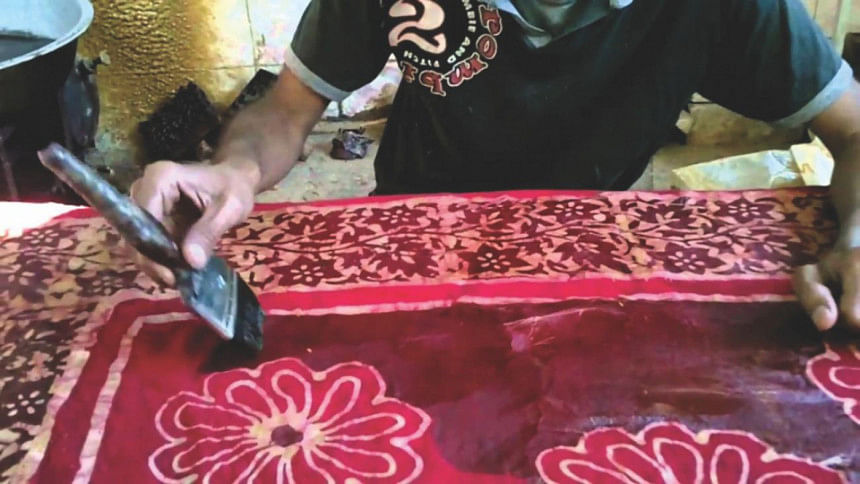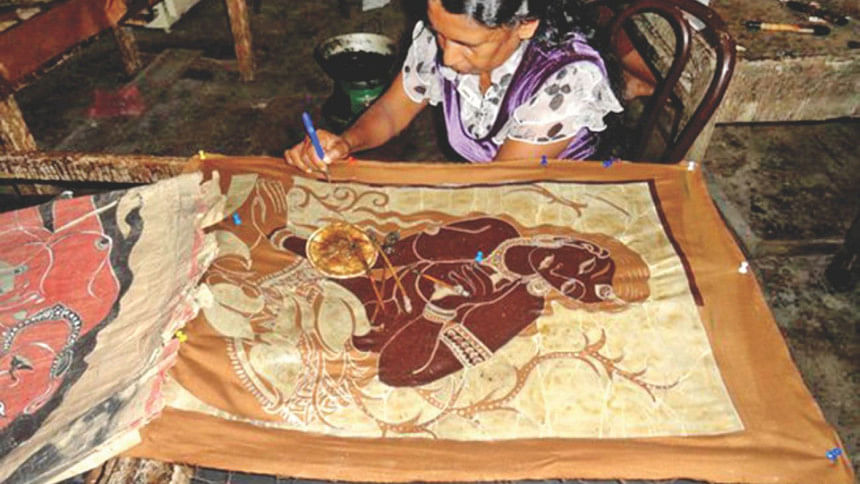Batik-the art of colours

The age-old traditional technique of creating art with layers of hot wax and coloured dyes has come back into the limelight in the recent years, becoming more popular than it ever was. Commonly known as batik, three-pieces and fabric rolls in vibrant batik prints of varying quality are visible even on many street corners. The lusty colours, and the hundreds of possible combinations, have won the hearts of both fashion-lovers and art-enthusiasts all over the world. The specialty of batik lies in its ability to blend modern and traditional art to create unique designs.
Practiced for centuries, the history of batik goes as far as 4th century BC in Egypt. Soon enough, Asia caught up, with China being the pioneer and the Indian subcontinent and Japan quickly following. But it was actually in Java, Indonesia, where the art of batik was perfected. In fact, even the word batik originates from the Javanese tik, which means to dot.
Till date, Indonesia produces some of the finest batik patterns in the world and even has a specific day of the week where all officials celebrate the batik culture by wearing batik clothes to work! However, this extraordinary art form would have still been unknown to the rest of the world had it not been for the Europeans. So, with an impressive display at the Exposition Universelle at Paris in 1900, batik's foray in the international arena truly began.

The batik scene has been rather vibrant in Bangladesh since long, with bright hues such as magenta and sky-blue being dominant. Village-women would spend hours making the perfect batik sari or bedsheet. With the batik business especially being prominent in Comilla, plenty of small factories are quite involved with the tradition, constantly improving to keep up with the worldwide scene.
Over the years, the evolution of batik has been rather extraordinary. Contemporary batik is a mixture of a variety of styles and patterns, with new techniques such as etching and discharge dyeing being introduced on a regular basis. From abstract designs to detailed prints, batik artists have made it a point to produce unique vibrant artworks for their admirers.
In fact, some have taken it up a notch, producing colour-coordinated themes, and even incorporating surrealism and other concepts into their work.
Making batik fabric is actually quite a labour-intensive technique of wax-resist dyeing. While various types of dye and wax is used on natural fabrics such as cotton and silk, the finer weaves work best for detailed work. Skilled batik maestros often go through a rigorous process of repeated waxing and dyeing, which require great aptitude of colour mixing and over dyeing.
Dots and lines of the resist are often made with a spouted tool or by printing the resist with a copper stamp. Finally, the wax is removed by boiling out and you are left with a beautiful masterpiece.
With more and more techniques being introduced, batik art is only going to get more sophisticated. And while designers bring you the best of them, this wondrous art truly has a long way to go.
By Adiba Mahbub Proma
Photo: Collected

 For all latest news, follow The Daily Star's Google News channel.
For all latest news, follow The Daily Star's Google News channel. 



Comments